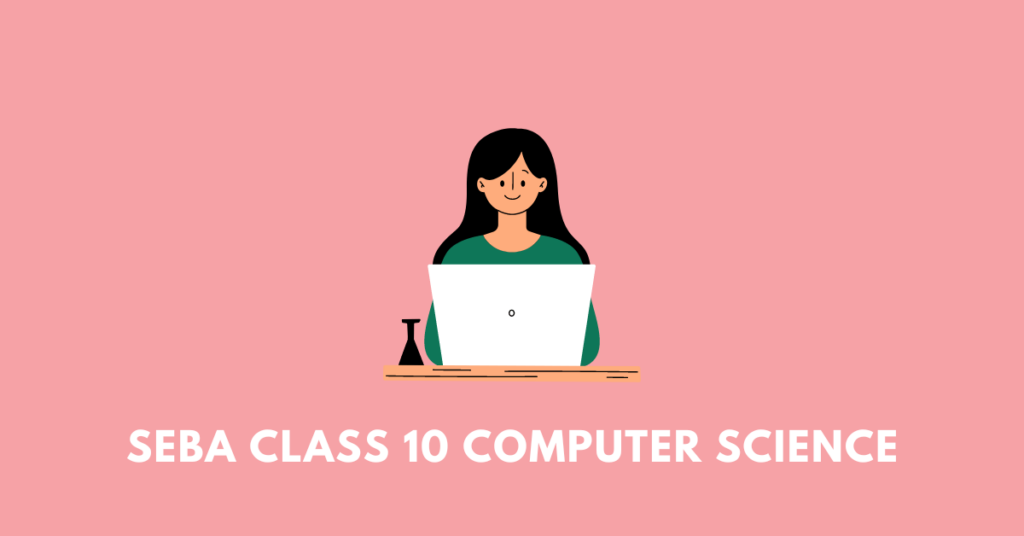Here, you will find summaries, questions, answers, textbook solutions, pdf, extras, MCQs etc. of (Board of Secondary Education, Assam) SEBA Class 10 (HSLC/Madhyamik) Computer Science. These solutions, however, should be only treated as references and can be modified/changed. Please select the chapter and proceed.
About SEBA Class 10 Computer Science textbook
The SEBA Class 10 Computer Science Textbook is designed to provide students with an in-depth understanding of computer science, equipping them with the necessary skills to capitalize on the ongoing digital revolution. Building upon the introductory knowledge gained in Class IX, this textbook focuses on developing a solid foundation in the subject.
The textbook comprises 11 chapters covering various aspects of computer science, such as computer networks, HTML and CSS, databases, C programming language, object-oriented programming, and case studies illustrating real-world applications. The chapters are contributed by different authors, ensuring a comprehensive coverage of each topic.
The textbook covers concepts like computer networks, addressing in networks, network devices, communication protocols, and networking commands in the first chapter. It then moves on to HTML and CSS, providing a detailed introduction and explaining various elements like lists, tables, images, links, frames, and forms. The third chapter focuses on databases, specifically MySQL, discussing its importance, data types, table structures, and select statements.
The following six chapters delve into the C programming language, introducing loops, nested loops, arrays, functions, pointers, and structures. These chapters provide detailed explanations of each concept and include examples to help students understand their practical applications.
The tenth chapter introduces object-oriented programming, discussing its characteristics, building blocks, and features, as well as advantages and disadvantages compared to procedural programming. The final chapter presents case studies related to daily applications of computer science, enabling students to see the real-world relevance of the subject matter.
Overall, the SEBA Class 10 Computer Science Textbook aims to provide students with a thorough understanding of computer science concepts, empowering them to seize opportunities offered by the digital revolution. By making the resources available online, the authors ensure that students have the tools they need to succeed in their computer science journey.

Ron’e Dutta is a journalist, teacher, aspiring novelist, and blogger. He manages Online Free Notes and reads Victorian literature. His favourite book is Wuthering Heights by Emily Bronte and he hopes to travel the world. Get in touch with him by sending him a friend request.
Get notes of other boards, classes, and subjects

I am so grateful for your notes.
nice notes
please provide me the notes of chapter 7